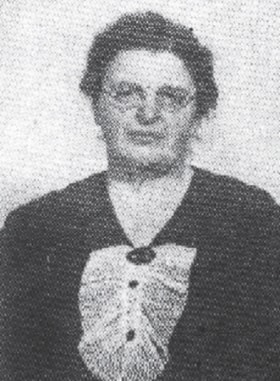The year was 1934 and women were not often seen delivering God’s message from behind the pulpit.
That didn’t stop 38-year-old Pearl Reist from packing up her belongings, rolling up her shirtsleeves and moving to Hoadley from Didsbury to become the town’s new preacher.
Reist, no doubt a rebel in her own right, ignored the district superintendent’s advice to pack light and instead brought everything she owned.
Apparently she did that so she had nothing to come back to.
The new preacher held her first service at the Hoadley Pool Hall where she delivered her sermon behind a shipping crate that served as a makeshift pulpit. Boards were laid on nail kegs to serve as pews.
Despite the conditions, which in no way, shape or form, resembled a church, 45 people attended that first service held June 10, 1934.
Reist, who had a bachelor of arts degree from a university at Winona Lake, Ind. proved she was made of pioneer spirit; strong, resilient and with a kind and caring heart. Sometimes she would walk 10 miles a day to visit families.
The minister became the bride of Nels Lemont in 1936. In later years she travelled by bus to teach courses at Mountain View Bible School in Didsbury, worked at the YWCA in Edmonton and was matron of high school girls in Medicine Hat. She died in 1956 and is buried in the Hoadley Cemetery. Her funeral was the first service held in the new unfinished church building built east of Hoadley beside the cemetery.
For several years the church at Hoadley was called Lemont Memorial Missionary Church in her honour.
While the homesteader’s cottage at Pas Ka Poo Park is not the home of Pearl and Nels Lemont, the log house was on their property and is similar to the house in which they lived.
The house was partially built by Felix Edlund, a Swedish miner who homesteaded near Hoadley. However, when it was nearly finished Edlund left the area and the cottage sat unfinished for many years.
The Kramer family bought the land the cottage was on and donated it to the park in the early 1970s.
Members of the historical society put the finishing touches on the old log building and turned the inside into an early settler’s home.
Since 1922, Hoadley, once a thriving centre with two cafes, a barbershop, a pool hall, a general store, a hardware store, a blacksmith shop, a post office, a creamery and a hog buying station, has shrivelled.
But in the early years, Tributaries of the Blindman states it was common to see up to 50 teams and sleighs in town at noon.
When the railway was extended north to Winfield and beyond, and the Depression hit, many Hoadley buildings became empty. Later the highway came through, but missed old Hoadley.
Interestingly, the church, begun by a single woman in the Depression, has continued to thrive.
